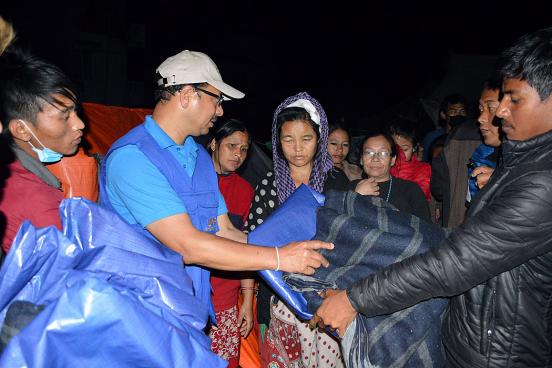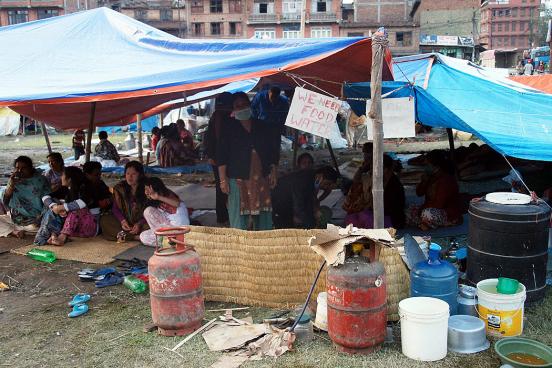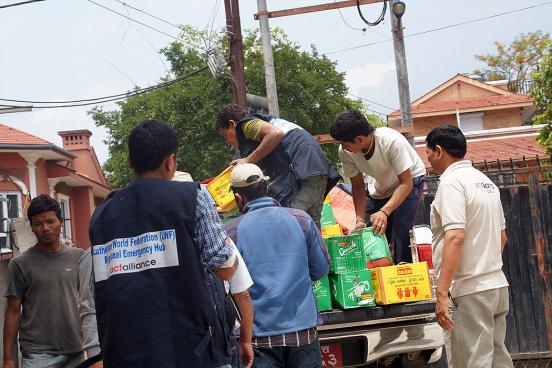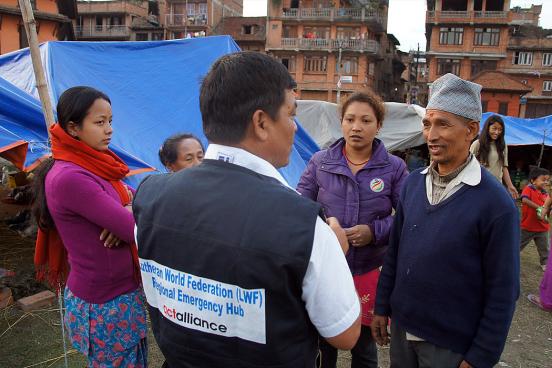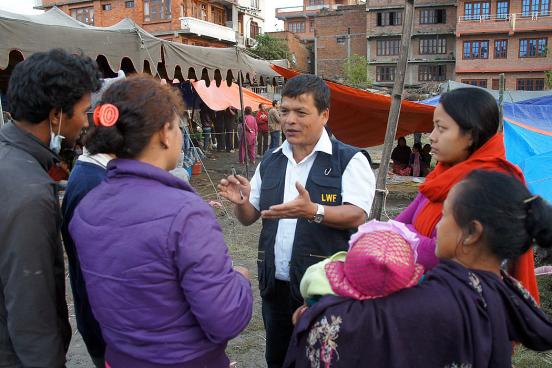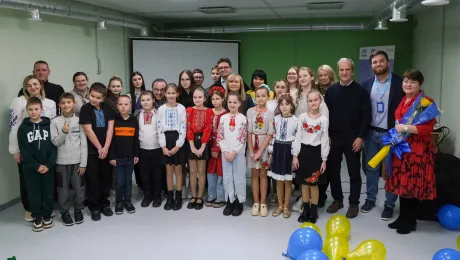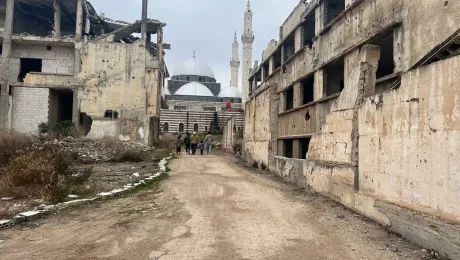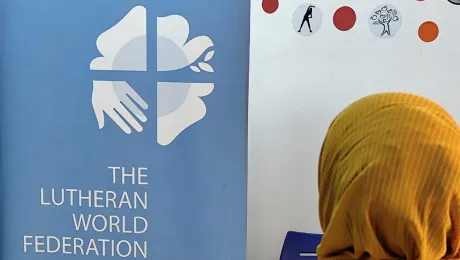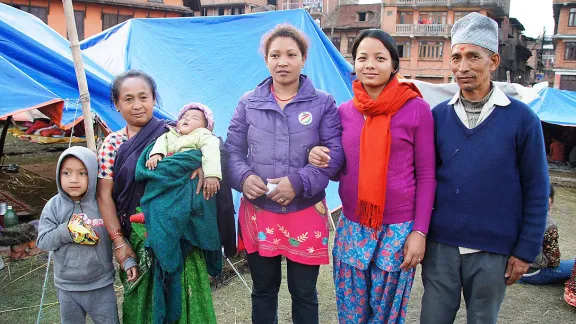
The Kunda family, in the camp which sits just opposite their house. Credit: LWF/C Kästner
LWF continues distributing emergency aid in Nepal
KATHMANDU (Nepal) 30 April, 2015 (LWI) – “The house rocked like a galloping horse,” Mahendra Shresta said, recalling the earthquake five days ago. “We were all inside, on the top floor. We could not even hold on to each other.”
His sister adds, “Everything was waving from one side to the other.”
“When it stopped, it was like leaving a boat. I could not walk straight. Even now I am still shaking inside.”
The family managed to get out before the roof collapsed. Since then, they have been camping in the open, with a tarpaulin propped up on sticks as their only form of shelter. “We do not dare to go back into the house,” Mahendra says. “It survived the big earthquake in 1934 but now it has cracks all over.”
Large number of unofficial camps
Mahendra and his family are among the 175 families to which The Lutheran World Federation (LWF) has distributed tarpaulins and ready-to-eat food. Their camp is but one of 16 official and hundreds of unofficial camps in Kathmandu.
Mahendra’s home district Bhaktapur, just outside Kathmandu, experienced the greatest devastation. People there have little income and live in old brick houses, many of which were badly damaged when the magnitude 7.9 earthquake shook Nepal on April 25. Fallen roofs, rubble in the streets and large cracks in building frontages indicate that most houses in Bhaktapur are no longer safe.
“We are still wearing the same clothes as when we left the house,” Safinaraina Kunda says. The elderly man is the head of a family of 10. The family has set up a tarpaulin structure in the same camp as Mahendra.
To find them, visitors and aid workers navigate tarpaulin strings and small ditches that keep the early monsoon from what little people were able to save. “I have never experienced an earthquake before,” his daughter-in-law adds. “It seemed to last an hour. I was so frightened.”
The people who have lost their homes cite shelter, water and food as their greatest needs. “This tarpaulin is not big enough for all of us,” Mahendra says. “The wind blows underneath and when it rains it leaks. Those who sleep on the corners get wet and the moisture rises from the ground.”
Sanitation is bound to be a problem. People wash in public wells and ritual baths, clothes hang to dry everywhere. Toilets are nowhere to be seen. Already people in the streets wear masks to fend off diseases.
Access to remote districts
Among the people in the tarpaulin cities all across Kathmandu are those whose houses have collapsed or bear cracks but also those whose houses remain stable and intact. Although there have been no aftershocks for more than a day, it is only now that those whose houses are still intact are slowly returning home. Even more than the death, injury and physical damage caused, the earthquake has shaken the inner calm of the people of Kathmandu.
“In a few days, those who can will return to their homes and the image will become clearer,” Duane Poppe, from the LWF emergency team says. “That’s when our long-term work really begins.” The LWF is now sending assessment teams to more remote districts. As roads are cleared, the official death toll increases as news of villages that have been entirely destroyed comes to light.
The LWF team is giving assistance after rapid assessment based on government reports and the findings of staff, many of whom are from the region themselves.
“We have been working with these communities for 30 years,” LWF Nepal country director Dr. Prabin Manandhar says. “We know them. With our team fully operational, we will do what we can to assist them now.”
For more information, please see the LWF Nepal website, the LWF Nepal program page and the Nepal earthquake emergency page





